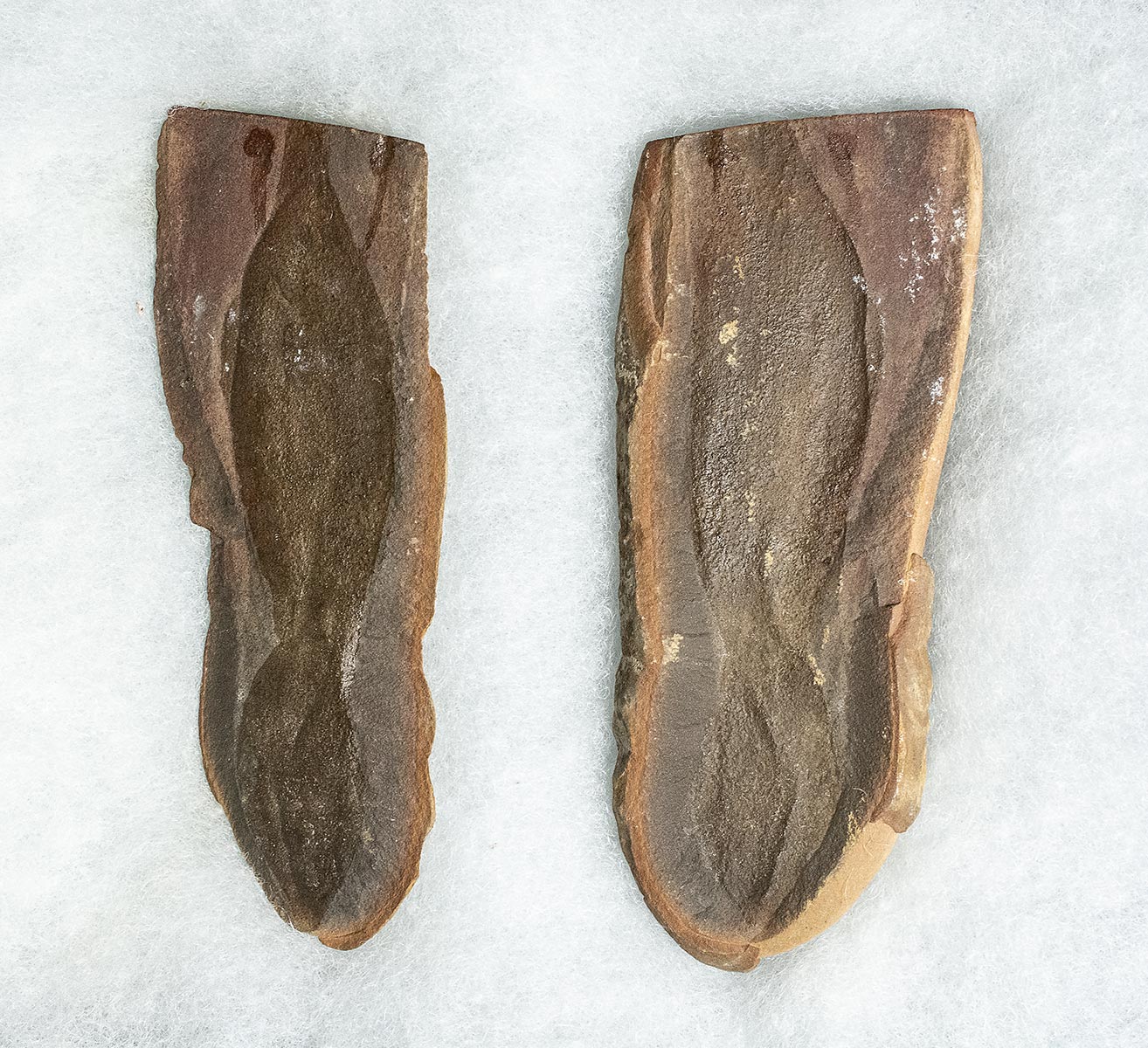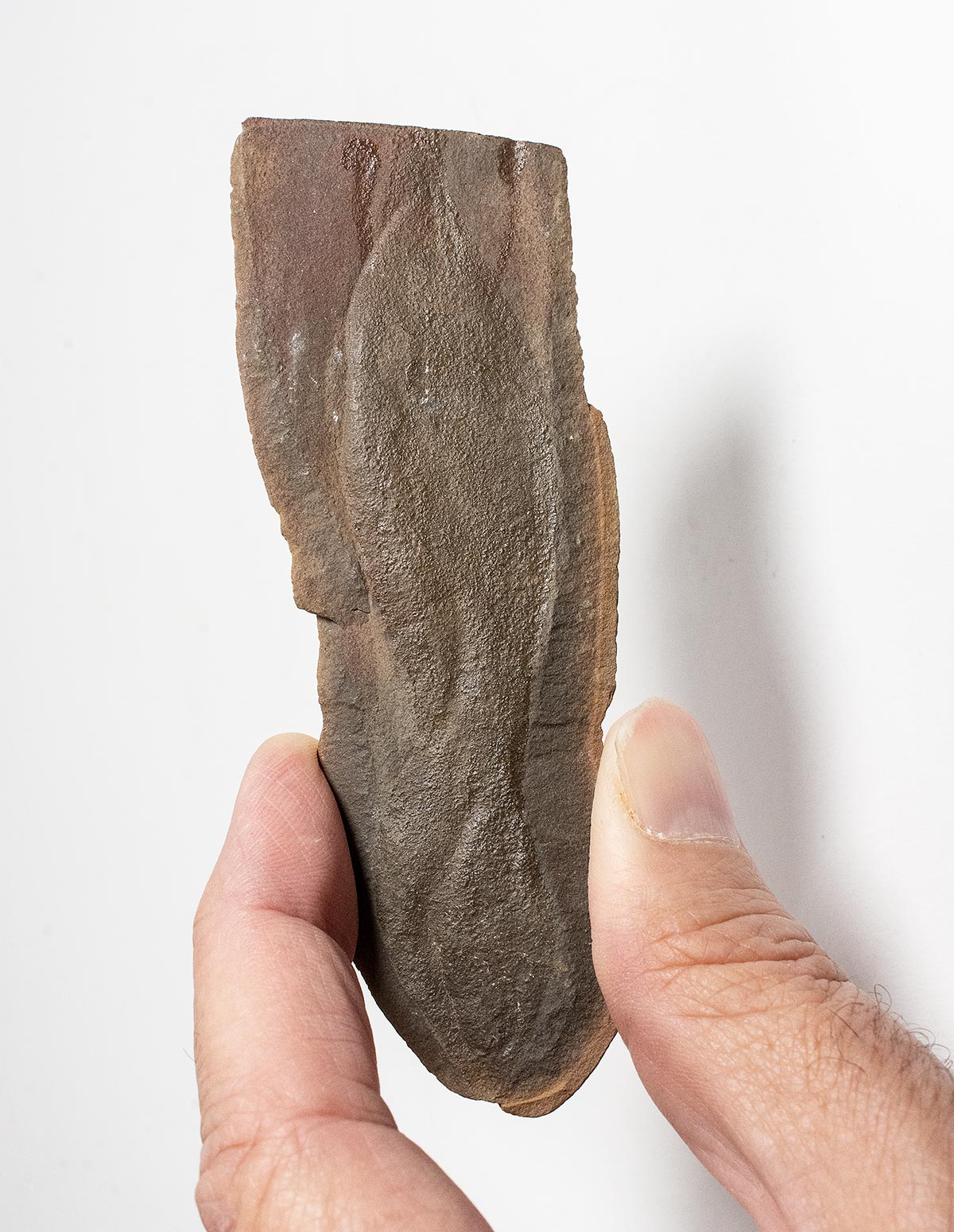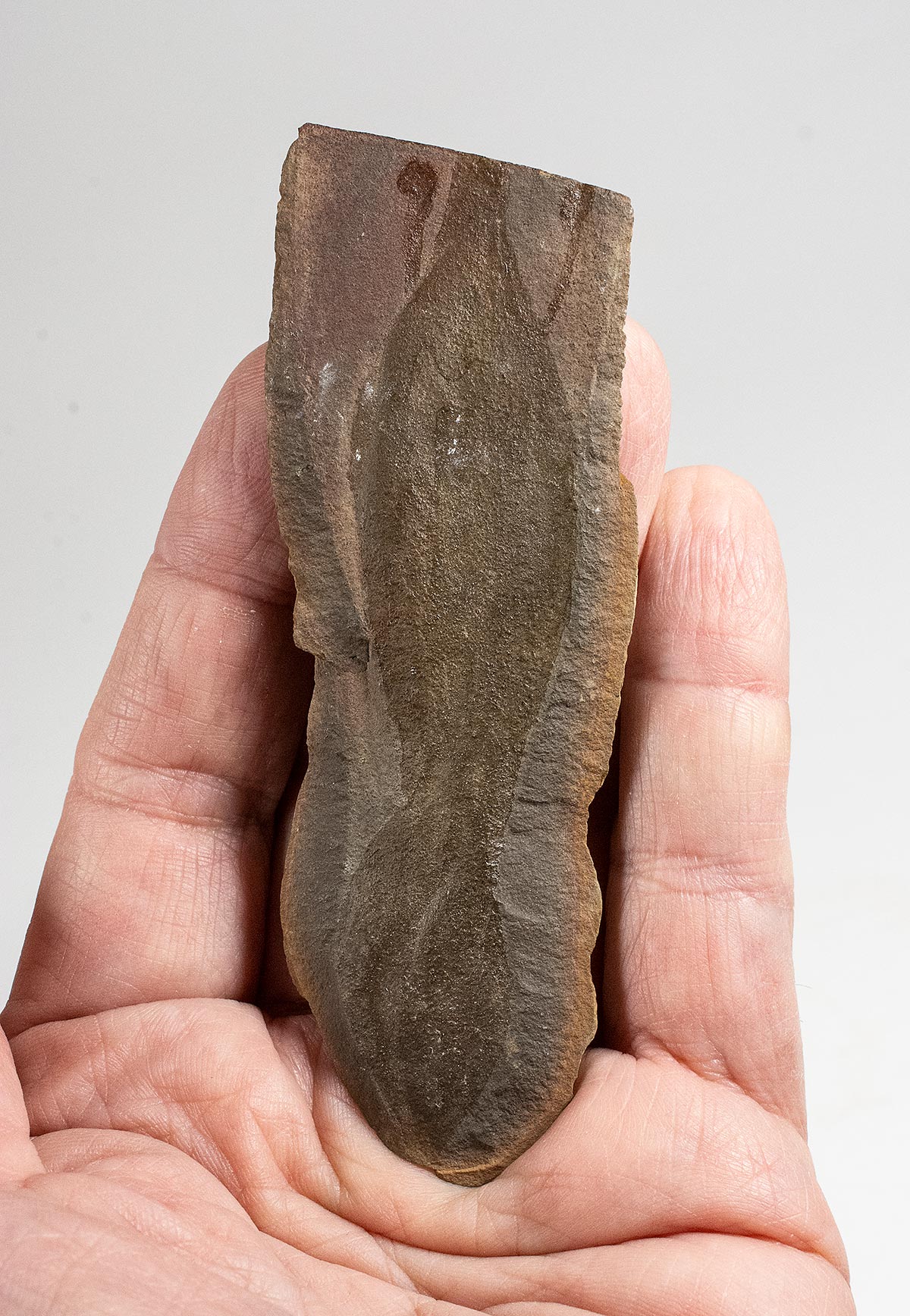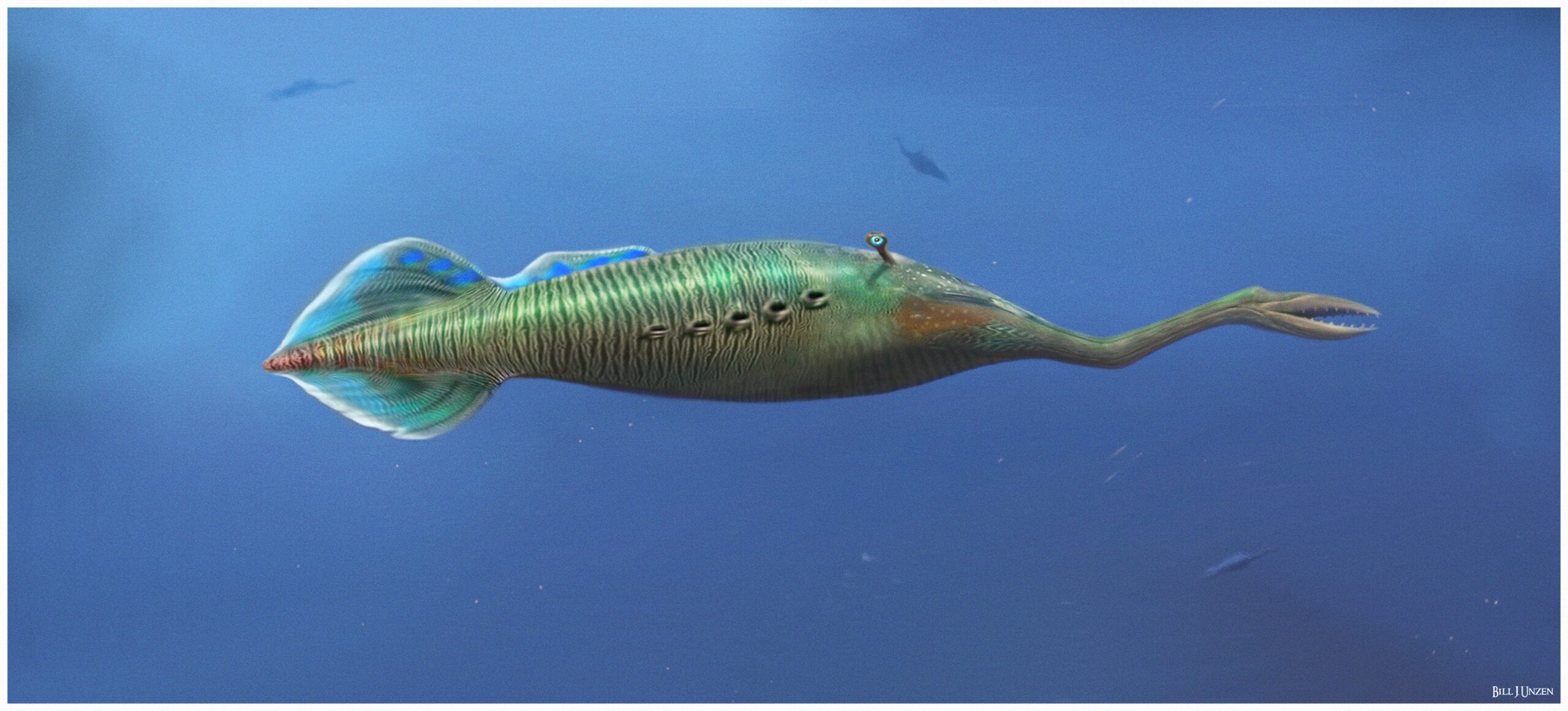Description
Tullimonstrum gregarium
Mazon Creek Biota
Middle Pennsylvanian (Westphalian D)
Francis Creek Shale Member, Carbondale Formation
Will County, Illinois, USA
Fine 104mm (4.1 inch) near complete pair. First we have had in a long time
Tullimonstrum, commonly known as the Tully Monster, is an extinct marine creature that lived around 300 million years ago during the Carboniferous period. It’s one of the most enigmatic organisms in the fossil record due to its bizarre appearance and uncertain classification.
Discovered in the Mazon Creek fossil beds of Illinois, USA, in the 1950s by amateur fossil collector Francis Tully (from whom it gets its name), the Tully Monster quickly became a subject of scientific fascination. Its fossils are typically found in ironstone concretions, preserving its soft tissues in remarkable detail.
The Tully Monster had a long, soft body with a pair of stalked eyes at the front, a long proboscis or trunk-like structure ending in a toothy mouth, and a pair of fins near the rear. It ranged from a few inches to about a foot in length. Its exact biological affinities have puzzled scientists for decades. Initially, it was classified within its own phylum, Tullimonstrum, due to its unique characteristics.
Several hypotheses have been proposed regarding its classification. Some scientists suggested it might be related to mollusks, while others proposed it was a type of early vertebrate or a distant relative of modern lampreys. However, recent studies using advanced imaging techniques and analyses of the fossilized eyes suggest that Tullimonstrum may have been a vertebrate, possibly related to jawless fish.
Despite ongoing research, the exact evolutionary relationships of Tullimonstrum remain uncertain. Its peculiar body plan and lifestyle have made it a subject of scientific debate and popular interest, with its image often appearing in books, documentaries, and scientific articles discussing evolutionary biology and paleontology.








